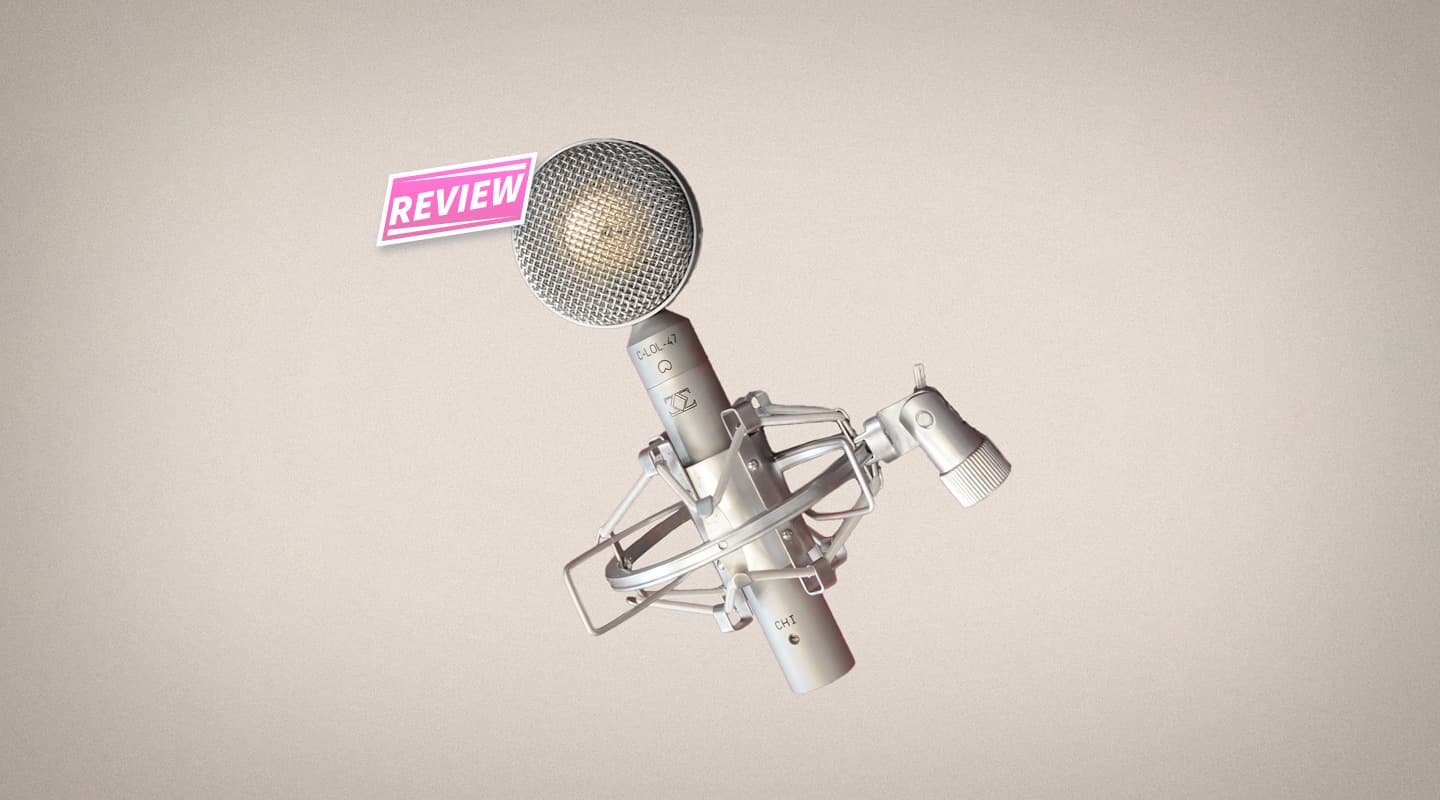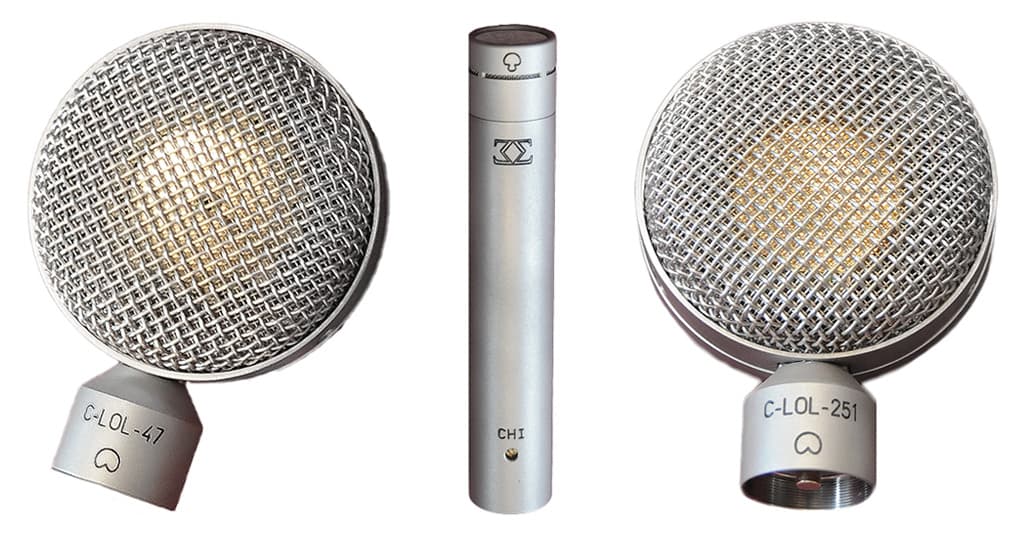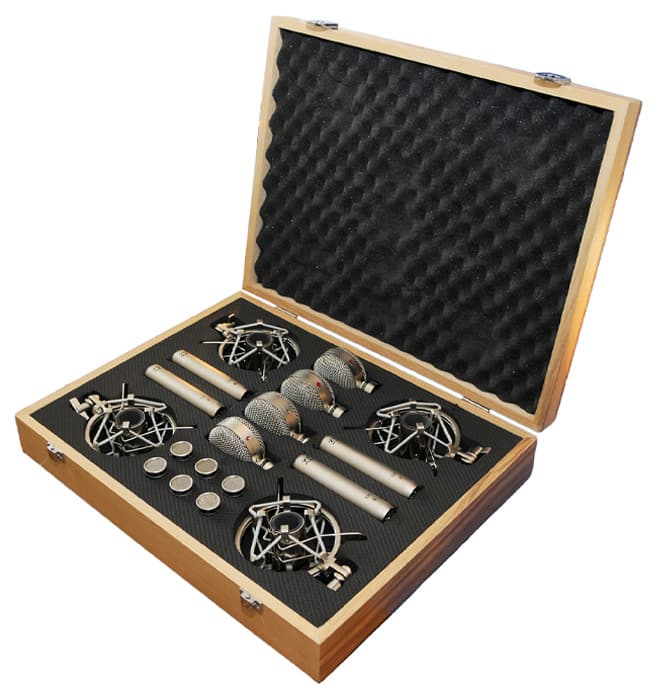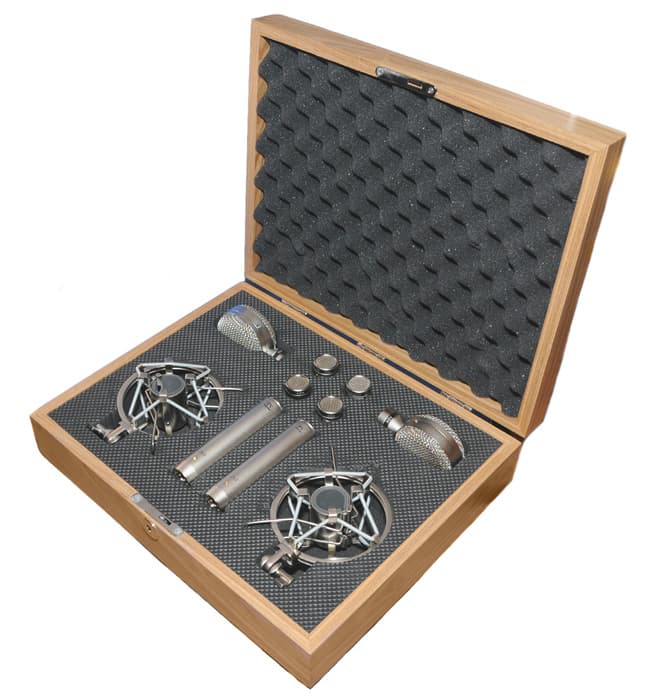
Review: 3 Zigma CHI
ADK Microphones has spawned a spin-off, boutique stuffing for its high-end 3 Zigma capsules. The 3 Zigma CHI interchangeable head and body system is class kit, in kit form.
3 Zigma is a specialist boutique brand created by established microphone manufacturer ADK for the purposes of bringing the CHI (Capsule Hybrid Integrator) system to market. The CHI microphone system is a new variation on an old theme: a simple cylindrical microphone body contains a basic amplification stage to which a variety of capsule heads can be screwed on for different applications and sonic results. Where the 3 Zigma design differs from Neumann and Schoeps classics is that the same mic body will accept both large and small diaphragm capsules, thus significantly expanding the system’s reach as a microphone toolkit.
OFF WITH ITS HEAD!
The CHI system is based on two simple head amp designs. The HA-TLII is a ‘straight wire’ transformerless FET body and the HA-FX is a transformer-coupled body that adds three-position switches for attenuation and bass roll-off. These designs are extremely low noise (most capsules are quoted at a pin-drop S/N ratio of 80+ dB using the HA-TLII body) and require a standard 48V power source, so no old-school PSUs sitting on your floor. Conceived as tools for both the classical recording and studio worlds, the idea seems to be to keep a transparent, uncoloured circuit at the head amp and let the various available capsules do the colouration if required. The small diaphragm CHI capsules aim for clarity and purity of signal while the large diaphragm capsules are more coloured. There are also plans afoot to release a valve-driven body later in the year which would be an interesting alternative to the straight wire approach. Just to be clear, there are no polar pattern selectors to be seen here — if you want to switch from a cardioid to an omnidirectional pattern its ‘off with its head’ and time to grab another capsule out of the box. Given that one head amp and a set of capsules will cost you upwards of a grand there’s a considerable buy-in to be made if you want to assemble a real studio toolkit in this way, but the flexibility of the CHI system does have a definite appeal and it’s something that can grow according to your needs over time.
LOLLIPOPS & LIPSTICKS
The resemblance of the large diaphragm capsules to lollipops so struck the folks at 3 Zigma that it even found its way into its nomenclature (or it’s trying to appeal to the kids, LOL!) — so we have the C-LOL-12, C-LOL-47, C-LOL-67 and C-LOL-251 head capsules, each referring rather bluntly to a classic ’50s or ’60s microphone of European origin. Spelling it out, 3 Zigma says that these capsules were designed with the AKG C12, Neumann U47 and U67, and finally Telefunken ELAM 251 ‘in mind’. Reading between the lines I’m guessing the 3 Zigma boffins spent a fair bit of time trying to mimic the tonal signatures of these 20th century milestone models. Personally it always disappoints me when manufacturers hijack the names or numbers of revered classics while the actual design elements (valves and transformers anyone?) bear little resemblance to those of the original models. It’s a cheap shot given that what’s on offer here is aimed at a relatively high-end market and the mics themselves are well-built, robust and very easy on the eye. The kits come in attractive wooden cases and are supplied with robust and reliable suspension mounts. Mesh grill covers either side of the circular LD capsule heads and a stylish engraved logo and polar pattern symbol indicate which side is the front of each capsule. Both bodies and heads are finished in silver, and the mics have a timeless look about them.
All the LD capsules are cardioid and exhibit slightly different frequency contours, especially in the area above 2kHz. The C-LOL-12 has pronounced peaks at 5kHz and 12kHz, the C-LOL-67 has similar but more gentle rises while the C-LOL-251 has a 5kHz peak and a steep rise around 15kHz. Finally the C-LOL-47 (the slightly more expensive sibling) has the most modest peaks of them all at 3kHz and 12kHz. Below this, they all exhibit very flat tonal response and most of them taper off gently below 50Hz although the C-LOL-251 stays strong in the lower frequencies down to around 30Hz.
By contrast the ‘lipsticks’ (the small diaphragm capsules) are simply named according to their cardioid patterns. They are the SD-C cardioid, SD-H hyper-cardioid, SD-O-D diffuse-field omnidirectional and SD-OMNI-F free-field omnidirectional models. The diffuse field model is aimed squarely at ambient recording situations where an even treble response is required off axis. The free field model has a more conventional omni pickup pattern where treble response is maximised for on-axis sources. The two cardioid models exhibit a gentle taper below 100Hz but the omnis are ruler flat out to 20Hz making them ideal for live concert and other distance miking applications. There’s no figure-eight option available yet.

NEED TO KNOW
3 Zigma CHI
Microphone System
BIG TOPS
I didn’t have much time to reflect on these mics before throwing them in the deep end during a week of overdubbing with Wollongong country folk maestro Patrick Lyons. I pretty much stuck to the C-LOL-47 with the HA-FX transformer-coupled body for most of the tracking as I screwed it together first and it worked well on a wide variety of sources straight off the bat. By the end of the week I’d had it on BVs, kick, drum overheads, electric guitars, double bass, acoustic guitar, banjo, dulcimer and piano and I’ve got to say I was never tempted to replace it with something else. Going through either a Neve or Universal Audio preamp, the tonal balance was spot on for most of these sources — perhaps a little dark on double bass but that was easily rectified by some gentle EQ — and the sounds sat happily in with what was already tracked elsewhere.
I was really pleased with how this mic translated everything in my studio space. Later, as an experiment, I recorded an entire track using just the C-LOL-47 head on the HA-TLII transformerless body. Any concerns about a thin or characterless sound (given the transformerless design philosophy) were quickly banished. Tonally, the finished track sat surprisingly well with no EQ or compression, and I was particularly pleased with the vocal tone and the sense of dimension in the drum overhead position. I repeated this experiment with both the C-LOL-12 and C-LOL-67 using the transformerless bodies and again the results were favourable. Though each mic had its own sound I was a little surprised by how similar the three mics sounded. The C-LOL-67 had the lowest output of the three and particularly shone on overheads and guitars while the C-LOL-12 exhibited a stronger and somewhat less controlled top end which gave acoustic and electric guitars a bit more sparkle and sense of aliveness.
Both the C-LOL-12 and -67 worked well as vocal mics with their extra presence bringing forward both detail and sibilance, but for my voice the C-LOL-47 on the transformer-coupled body won this particular shootout with its midrange realism and tonal control a real standout. I double checked that this was still my preference even with the transformerless body — and yes the mojo was definitely in the capsule. I overdubbed some vocals on a few older tracks and really liked the way the C-LOL-47 punched through the mix while sounding ‘honest’ in a way that none of my other LDC options do. Overall I’d describe the tone of these three capsules as realistic but with an ability to convey nuances of performance and tone in a flattering way given the right sources.


SMALL DETAILS
Last, but not least, I turned my attention to the small diaphragm capsules. On acoustic guitar and piano both the cardioid and omni free field heads did a very good job of delivering clean, detailed acoustic images, and the omni definitely ‘held its head high’ as a room mic with less presence boost than the directional models. Having said that I somehow expected a little more magic from them and in this regard they were more honest than flattering. Perhaps the lack of a valve gain stage is more evident here, and while they did narrowly best my AKG C451s, I couldn’t help but mentally stack them up against the stunning sound of a Neumann KM56 or Mojave MA100. On a strummed acoustic guitar part I preferred the large diaphragm C-LOL-67, but when it came to a more restrained picking part, the cardioid small diaphragm capsule won the day. The cardioid head also won my respect as a hi-hat and snare mic, where the pad on the transformer-coupled body helped deliver clean accurate transients with no audible smearing or distortion.
HEADMASTER
The 3 Zigma mics are a very interesting proposition. While at first I was a little sceptical about their abilities, I quickly grew to know and like them a lot. It’s a testament to their sound and flexibility that in close to three weeks of tracking I’ve used almost nothing else and I’m really happy with the results in a wide variety of contexts. Indeed the C-LOL-47’s performance has really got me thinking about acquiring one as a long-term option for lead vocal and general duties in my studio. These mics deliver an honest yet vivid representation of what you put into them, and if you are in the business of regularly capturing good performances using good sounding instruments in decent sounding spaces then you will love the 3 Zigma mics. In more compromised spaces they will almost certainly be less flattering. In the lavish acoustic environments of concert halls and other purpose-built performance spaces the small diaphragm mics may well be a step up in specifications and overall tonal quality to many of the current favourites. The CHI system is a serious set of quality audio tools that involves a significant investment, but for the right buyer they will deliver balanced, realistic sounds and flexibility in a simple and elegant package.
















RESPONSES